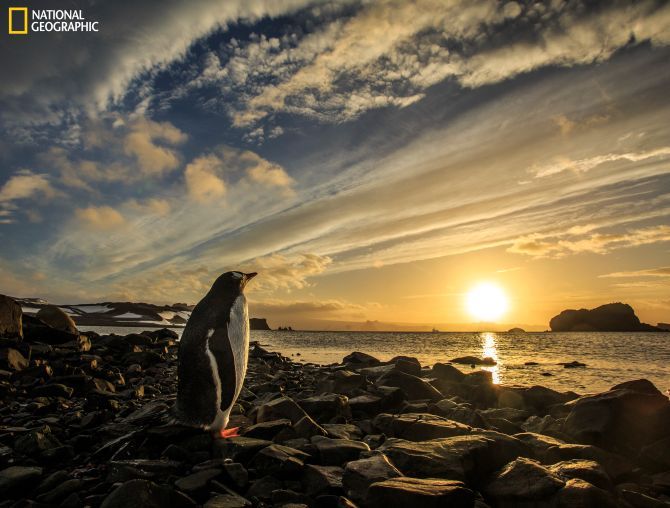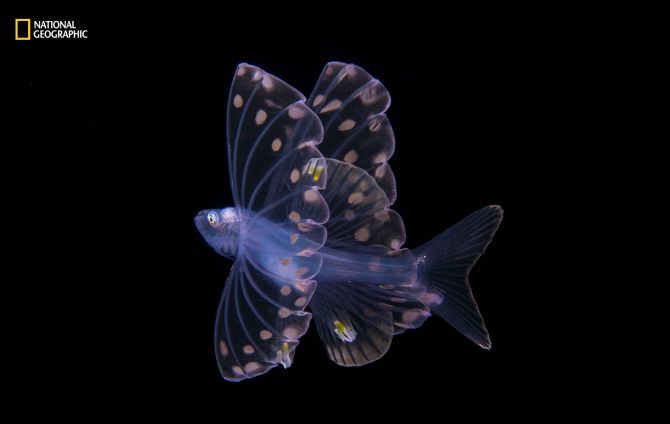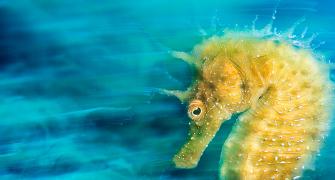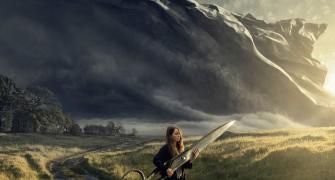 National Geographic’s contest for ‘Nature Photographer of the Year,’ has officially kicked off and the submissions so far are beyond incredible.
National Geographic’s contest for ‘Nature Photographer of the Year,’ has officially kicked off and the submissions so far are beyond incredible.
The annual competition, whose deadline ends on November 4, celebrates the best in wildlife photography. The Grand Prize Winner will receive a 10-day trip for two to the Galapagos Islands.
And the people at National Geographic were kind enough to let us display some of the stunning entries that have come in so far.
So get ready to be blown away!
(Please click on the photos for hi-resolution images)
OCEAN GUEST
Sleeping walrus on the shore. Photograph: Mike Korostelev/2016 National Geographic Nature Photographer of the Year
THE EYE OF A GATOR
As I was sitting on the bank of the wetlands, watching a pair of anhingas prepare their nest, when one flew right down in front of me to fish. I quickly focused on her and out of the water came a wonderful fish brunch. Photograph: Nancy Elwood/2016 National Geographic Nature Photographer of the Year
DAWN ADMIRING IN THE FROZEN CONTINENT
It was very early in the Antarctic morning and I was walking along the beach admiring the sunrise, then suddenly I had a wonderful surprise: meet this Gentoo penguin (Pygoscelis papua) already looking at the sun that was just on the horizon. At that moment I had the sensation that, like me, he had woken up very early to contemplate such a beautiful dawn. KingGeorgeIsland, Antarctica. Photograph: Edson Vandeira/2016 National Geographic Nature Photographer of the Year
NOW YOU SEE ME
A baby owlet uses its camouflage to hide from its predators as it spots me from quite a ways away. Photograph: S Dere/2016 National Geographic Nature Photographer of the Year
NEVER BOTHER DAD WHEN HE’S SLEEPING
During our trip to Botswana, we came across two lionesses and their six cubs, resting under a bush during mid-day. This male lion came along to visit the den. The females were very wary at first. We were told that a male lion will kill cubs that aren't his offspring. Fortunately, he laid down with the cubs and closed his eyes to sleep. The cubs were very excited to see their dad! This little guy was trying so hard to get him to play! Dad was definitely not happy to be woken up. Photograph: P Kuhn/2016 National Geographic Nature Photographer of the Year
WATER DROPS
The water drops of melted snow. Photograph: Takeshi Marumoto/2016 National Geographic Nature Photographer of the Year
CAPE BUFFALO WITH YELLOW-BILLED OXPECKER
I had been wanting to get this image for at least two years and just recently, on my last safari in November, was able to successfully capture it. Many aspects came into play for my reward. Light was key. Side-light, lighting the Oxpecker and keeping the Buffalo in the shade was crucial. I wanted a darker pallet for this image, and think I got it. I captured both subjects in focus, very difficult to do as both were moving and in different focal planes. Photograph: Barbara Fleming/2016 National Geographic Nature Photographer of the Year
FROM THE SHADOWS
Hiking with the local guides, we stumbled upon this Mountain Gorilla peering curiously from the depths of the impenetrable forest. Photograph: Harry Lyndon-Skeggs/2016 National Geographic Nature Photographer of the Year
MEDITERRANEAN JELLY
Cotylorhiza Tuberculata, aka Mediterranean Jelly or (more friendly...) Fried Egg Jelly, is pretty common throughout Mediterranean Sea. Its stings are totally harmless to humans yet its beauty is absolutely contagious. Photograph: Stefano Spezi/2016 National Geographic Nature Photographer of the Year
MOVING AT A SNAIL’S PACE...
While enjoying the sights of Chicago’s Garfield Conservatory found this unlikely traveler taking a closer look at this Bromeliad. Sometimes you have to slow down to appreciate the tiny wonders right in front of you! Photograph: Samira Qadir/2016 National Geographic Nature Photographer of the Year
THE PATH LESS TRODDEN
A polar bear ekes out a lonely existence in a barren world of ice. Photograph: Harry Lyndon-Skeggs/2016 National Geographic Nature Photographer of the Year
DEEP UNDERWATER
I recently discovered this Tripodfish, Bathypterois grallator, a larval fish during a ‘black water’ scuba diving expedition to document vertical migration marine creatures. This is done in the South Atlantic Ocean, Gulfstream current. The tripodfish or tripod spiderfish, Bathypterois grallator, is a deep-sea benthic fish, known mostly from photographs from submersibles. This fish comes up from the depths of 2,400 feet to 15,000 feet during a vertical migration occurring in the ocean. Photograph: Suzan Meldonian/2016 National Geographic Nature Photographer of the Year





















